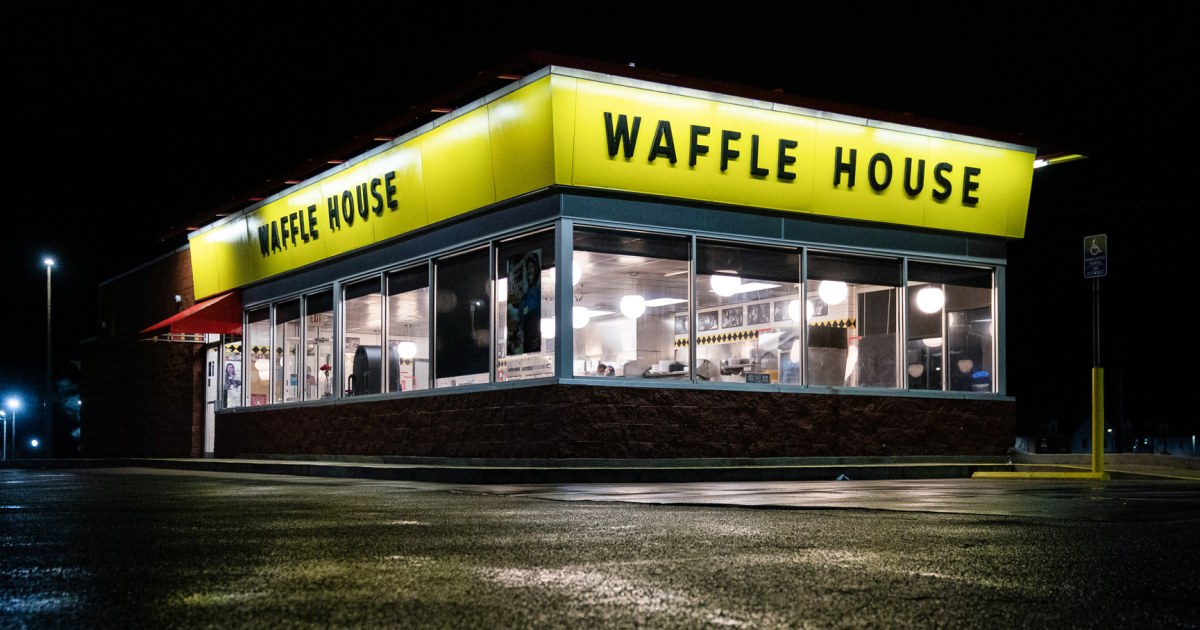Waffle House Implements $0.50 Egg Surcharge Amid Bird Flu Crisis
In a significant move that reflects the challenges facing the food industry, Waffle House has announced a $0.50 surcharge on egg dishes due to the ongoing bird flu crisis. This decision, while seemingly small, raises broader questions about food prices, supply chains, and consumer behavior in an environment increasingly affected by agricultural disruptions.
The Bird Flu Crisis and Its Impact
The avian influenza outbreak, commonly referred to as bird flu, has been wreaking havoc on poultry farms nationwide. This highly contagious virus affects both domestic and wild birds, leading to significant losses in egg production. According to the Centers for Disease Control and Prevention (CDC), the bird flu can lead to the culling of infected birds to control the spread, which in turn drastically reduces the available supply of eggs.
As a result, egg prices have been on the rise, reflecting the supply-demand imbalance. For a restaurant chain like Waffle House, which prides itself on offering affordable breakfast options, the decision to implement a surcharge is not just a reaction to rising costs; it’s a necessary step to maintain operational viability while still serving customers. The surcharge will help offset the increased expenses associated with sourcing eggs during this crisis.
Understanding the Surcharge Decision
The $0.50 egg surcharge is a pragmatic response to a complex issue. Here’s why Waffle House made this decision:
- Cost Management: With the cost of eggs skyrocketing, restaurants are faced with the challenge of maintaining their profit margins. The surcharge allows Waffle House to balance its books without drastically increasing menu prices across the board.
- Customer Transparency: By implementing a specific surcharge for eggs, Waffle House is being transparent with its customers about the reasons behind the price increase. Customers can see that the surcharge is a direct response to external pressures rather than arbitrary price inflation.
- Encouraging Alternatives: This surcharge may also encourage customers to explore alternative menu items that do not include eggs, thereby diversifying their dining choices and potentially reducing demand for egg-heavy dishes.
The Broader Implications for Food Prices
Waffle House’s decision is a microcosm of a larger trend affecting the food service industry. As the bird flu crisis persists, many other establishments may follow suit, leading to a ripple effect in food pricing. Here’s how:
- Increased Menu Prices: If egg prices continue to rise, restaurants will be compelled to increase prices on egg-based items, which could lead to higher overall dining costs for consumers.
- Supply Chain Disruptions: The food supply chain has already faced significant pressures due to the pandemic. The bird flu outbreak exacerbates these issues, leading to potential shortages not only of eggs but other poultry products as well.
- Consumer Behavior Changes: As prices rise, consumers may change their dining habits, opting for less expensive alternatives or reducing their frequency of eating out. This shift can impact restaurant revenues and long-term business viability.
Consumer Reactions and Adaptations
While the surcharge may be met with mixed reactions, it reflects a necessary adaptation to current realities. Many consumers understand that external factors, such as disease outbreaks, can significantly impact food prices. However, it’s essential for businesses to communicate these changes effectively to maintain customer trust.
Some customers may welcome the surcharge as a fair way to address rising costs, while others might express frustration. To mitigate negative reactions, Waffle House could consider:
- Promotional Offers: Introducing temporary promotions on non-egg items could entice customers to try new menu offerings while easing the burden of the surcharge.
- Transparency in Pricing: Providing clear explanations of the surcharge’s necessity on menus and in communications can help customers understand the situation better.
- Community Engagement: Engaging with the community through social media or local events can enhance customer loyalty during challenging times.
Looking Ahead: The Future of Egg Prices
The future of egg prices remains uncertain. Experts suggest that the bird flu crisis could last for months, if not longer, depending on the spread of the virus and the effectiveness of containment measures. As such, consumers and businesses alike should brace for continued fluctuations in egg prices.
However, this crisis also presents opportunities for innovation within the food industry. Restaurants may explore:
- Alternative Ingredients: With rising egg prices, chefs may experiment with egg substitutes or alternative breakfast items that can provide similar satisfaction without relying heavily on eggs.
- Local Sourcing: Establishing relationships with local farms that practice more sustainable and biosecure farming methods could provide a buffer against future crises.
- Menu Diversification: Expanding the menu to include a broader range of breakfast items can attract different customer demographics and mitigate reliance on any one ingredient.
Conclusion: Navigating the Challenges Together
Waffle House’s decision to implement a $0.50 egg surcharge amid the bird flu crisis is a reflection of the ongoing challenges faced by the food industry. While it may seem like a small adjustment, it signifies a broader trend of rising food prices and the need for restaurants to adapt to external pressures. As consumers, understanding these dynamics can foster patience and support for local businesses during tough times.
Ultimately, as we navigate through these challenges, it’s essential for both consumers and businesses to remain adaptable. By working together, we can find creative solutions to sustain our favorite dining experiences, even in the face of adversity.
See more CCTV News Daily



